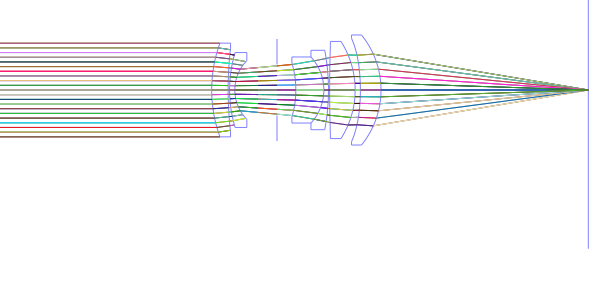An ideal lens with finite aperture leads to the formation of an image in the image plane as \begin{equation}g(x, y) = \int \text{psf}(x/\lambda d - x', y/\lambda d -y') f(x', y') dx'dy',\end{equation} where $g(x)$, $f(x)$ is the scalar light-field in the image-, object-plane and $\text{psf}(x)$ is the point-spread function. $d$ is the distance between the lens and the image plane.
The larger the aperture, the sharper $\text{psf}(x)$ is localized around $0$. Despite neglecting aberrations, the model nicely captures the finite resolution with which optical systems can image objects. Furthermore, at least conceptually, the effect of aberrations can be seen as a additional broadening of $\text{psf}(x)$.
However, in this model an arbitrarily large object is still imaged "perfectly" (with limited resolution of course), which is unphysical. So how does this effect of a limited field of view emerge? Is there a simple toy model that illustrates it, much like the simple ideal lens + aperture illustrates blurring due to diffraction?

